The chemical industry was founded on innovation and discovery—but may no longer need chemical researchers.
The manufacturing sector increasingly demands more specialised chemicals to suit specific products. Consequently, successful chemical companies must invest heavily in creating new chemical formulations to meet these needs.
However, the process of chemical research is slow and largely based on trial and error—that is until now. This is because researchers have found a way to use mobile robots programmed to compute with AI logic in a way that can outperform human chemical researchers.
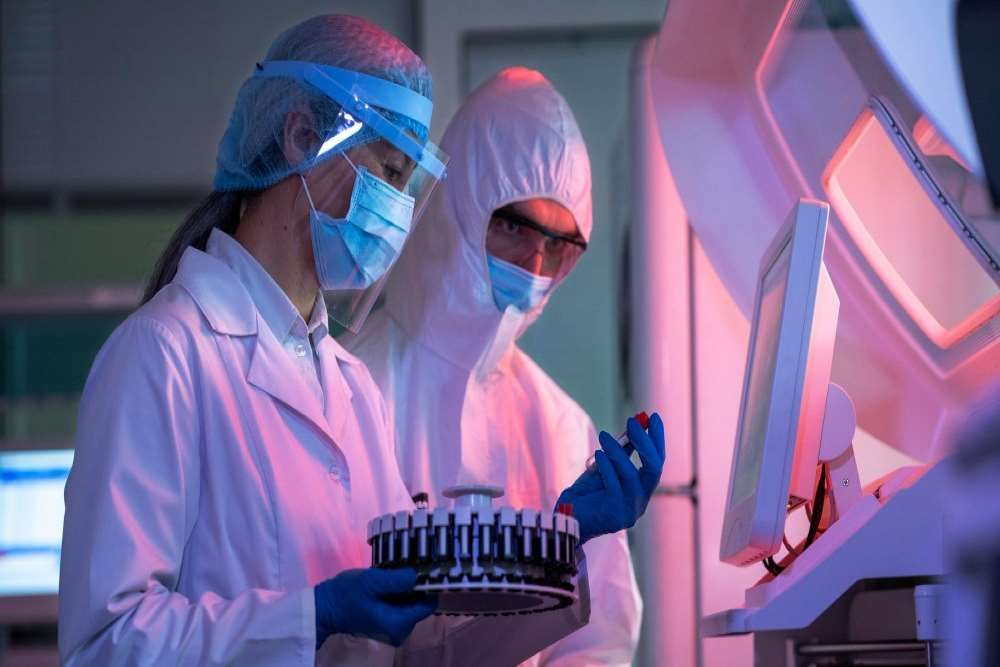
As the study, now published in the journal Nature, explains, “Most autonomous laboratories involve bespoke automated equipment and reaction outcomes are often assessed using a single, hard-wired characterization technique. Any decision-making algorithms must then operate using this narrow range of characterization data. By contrast, manual experiments tend to draw on a wider range of instruments to characterize reaction products, and decisions are rarely taken based on one measurement alone. Here we show that a synthesis laboratory can be integrated into an autonomous laboratory by using mobile robots that operate equipment and make decisions in a human-like way.”
Related articles: A Safer, More Sustainable Process for Industrial Fluorine Feedstocks or Plastic to Soap: Young Chemist’s Eco-Dream Turns to Reality
Based at the University of Liverpool, the research team created mobile robots measuring 1.75 metres tall to perform three main chemical industry research requirements: conduct the reactions, evaluate the results, and make decisions based on the findings.
The team set up two robots who worked together to solve challenges in three distinct areas of chemical synthesis—structural diversification chemistry (related to drug discovery), supramolecular host-guest chemistry, and photochemical synthesis.
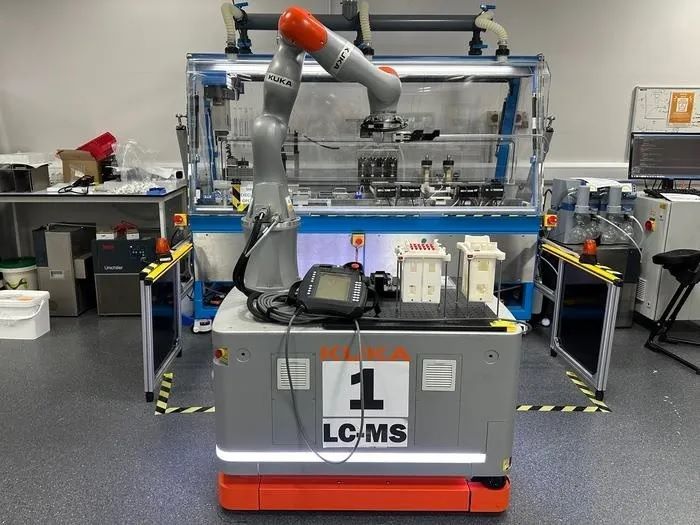
Their output was then assessed, with the researchers finding that the robots used their AI functionality to make decisions that were identical to or comparable to those made by a human researcher, but they did it much more quickly, with research time reduced by hours.
“When people think about robots and chemistry automation, they tend to think about mixing solutions, heating reactions, and so forth,” explains Prof. Andrew Cooper who led the research. “That’s part of it, but the decision making can be at least as time consuming. This is particularly true for exploratory chemistry, where you’re not sure of the outcome. It involves subtle, contextual decisions about whether something is interesting or not, based on multiple datasets. It’s a time-consuming task for research chemists but a tough problem for AI.”
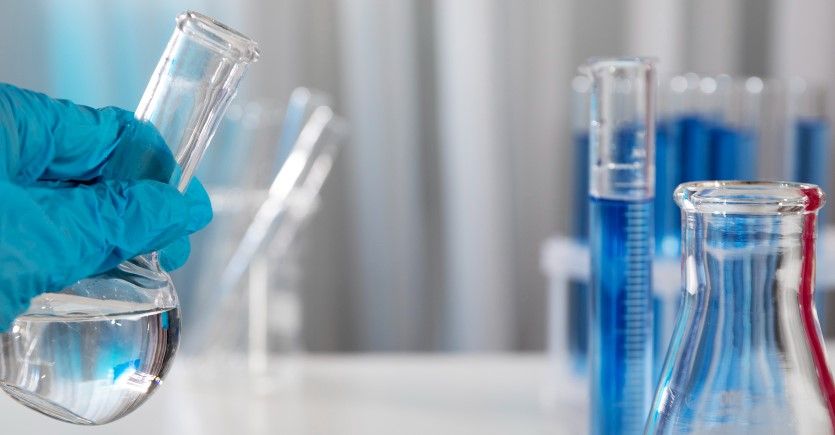
One of the fundamental issues in exploratory chemistry is decision-making. A researcher might, for instance, conduct a number of experiments before deciding to scale up just those that produce intriguing compounds or reactions that could lead to something valuable. This is challenging for AI to accomplish because there are several factors that influence whether something is ‘special’ or interesting enough to invest time and money in investigating further.
“When I did my PhD,” recalls Dr Sriram Vijayakrishnan, a postdoc. chemist who conducted the synthesis research. “I did many of the chemical reactions by hand. Often, collecting and figuring out the analytical data took just as long as setting up the experiments. This data analysis problem becomes even more severe when you start to automate the chemistry. You can end up drowning in data.”
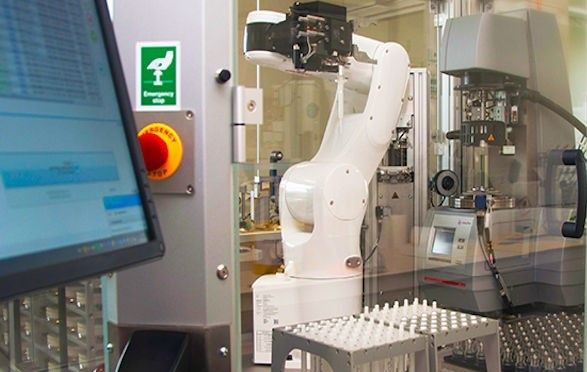
However, he was highly impressed with both the efficient work and decision-making that the AI-based robots were able to conduct. Specifically, Vijayakrishnan notes the speed at which the bots are able to evaluate the success or failure of an experiment and then decide whether to proceed to the next step in the reaction.
“[With the AI robots] This decision is basically instantaneous,” says Vijayakrishnan. “So, if the robot does the analysis at 3:00 am, then it will have decided by 3:01 am which reactions to progress. By contrast, it might take a chemist hours to go through the same datasets.”
“The robots have less contextual breadth than a trained researcher so in its current form, it won’t have a ‘Eureka!’ moment,” adds Prof. Cooper. “But for the tasks that we gave it here, the AI logic made more or less the same decisions as a synthetic chemist across these three different chemistry problems, and it makes these decisions in the blink of an eye. There is also huge scope to expand the contextual understanding of the AI, for example by using large language models to link it directly to relevant scientific literature.”
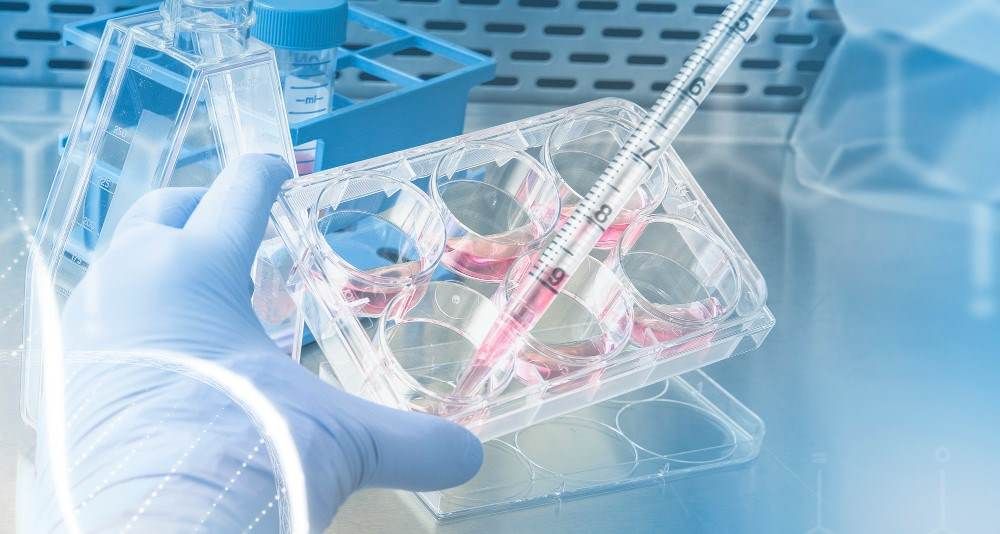
While the study employed only two mobile robots, the number of robot teams that may be employed is unlimited. This method might therefore be applied to even the biggest industrial labs to make even greater savings in both time and money.
As Prof. Cooper concludes, “Chemical synthesis research is time consuming and expensive, both in the physical experiments and the decisions about what experiments to do next so using intelligent robots provides a way to accelerate this process.”
Chemical research is an essential part of many successful chemical businesses yet is limited by time and money. With the smart application of AI operated robots, great cost-savings could be made, with even greater chemical discoveries being made much faster.
Photo credit: Freepik, Gencraft, Freepik, Freepik, & University of Liverpool